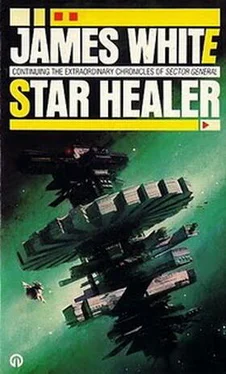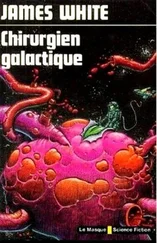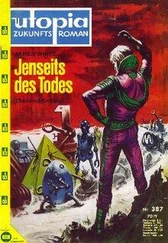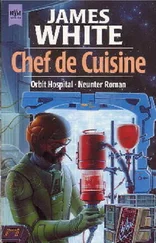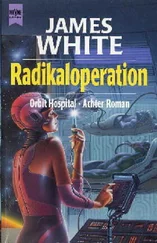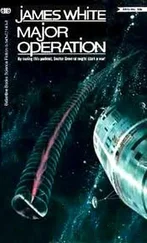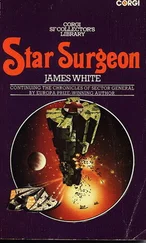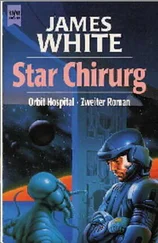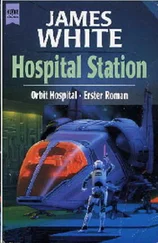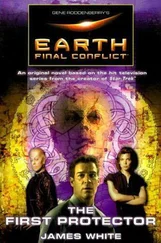Mention of that very personable female-mode nurse had excited his Hudlar mind-partner, so Conway had to spend a few seconds telling it to behave itself. But when he tried to return his mind to what he had been about to say, memories of his extremely aged but alert great-grandmother and, at the time, only friend welled up in his mind. That touched off a sudden, intensely strong feeling of sorrow from Khone over the loss of parental physical contact, which was so necessary for the maintenance of mental coherency in Cogleskan society, and which occurred at a very early age. He felt with Khone the past loss of that love and warmth and the expectation of future loss when its offspring would be born and remain close all too briefly before it departed. And strangely, although Khone’s presence had been reacting against nearly all of the material being thrown up by Conway and his other mind-partners, the little Cogleskan was able to consider the sight and sounds and memories of Conway’s incredibly old and fragile first friend without the slightest hint of distress.
This was important, he knew, because there were indications that the Gogleskan’s mind was not entirely repelled by the thought of the geriatric FROBs, either. A bridge was being built between Khone and the other species, and Conway began blinking rapidly because his tear ducts seemed suddenly to have developed a leak.
He felt Murchison’s hand squeezing his arm as she said urgently, “What’s wrong?”
“Conway,” O’Mara said, sounding concerned, “are you still with us?”
“Sorry, my mind went off at a tangent,” he said, clearing his throat. “I’m all right. In fact, I feel very well indeed.”
“I see,” O’Mara said. “But I would like to discuss the reasons for and the content of your tangential thinking at a more convenient time. Continue.”
“In common with elderly members of the majority of the intelligent species,” Conway resumed, “the very old Hudlars have a close affinity with the very young, and a great deal of benefit can be derived from this relationship by both parties if they are placed together. The aged entities are at the stage loosely described as second childhood, when the memories and feelings of their own younger days are thrown into prominence, and they have nothing much to do with their remaining time. The children would have an adult playmate who understands them, who enjoys their company, and who is not, like the younger adults and parents, perhaps too deeply concerned with the day-to-day business of life to have enough time to spend with them.
“Provided the geriatric amputee idea is acceptable to them,” he continued, “I think they would be prime candidates for pediatric nursing training. The less elderly, whose mental age would be significantly greater, could be trained as teachers of older children and preadolescents. They might also be usefully engaged in supervising automated production processes, or on watch-keeping duty on the weather control stations, or as- “Enough!” O’Mara said, holding up one hand. He went on caustically. “Leave me something to do, Conway, to justify my existence. At least, your uncharacteristic behavior of a few minutes ago is no longer a mystery. The childhood material in your psych file and your suggestion regarding the geriatric Hudlars fully explain your temporary loss of control.
“Regarding your original question,” O’Mara went on, “I cannot give you a quick answer, but I shall call up my Hudlar material at once and start work on it. You’ve given me too much to think about for me to be able to go back to sleep now.”
“I’m sorry,” Conway said, but the Chief Psychologist’s face had already gone from the screen.
“And I’m sorry for the delay as well,” he said to Thornnastor. “But now at last we can talk about the Protector …
He broke off as the blue “Vacate” light began flashing on their table, indicating that they had remained for longer than was necessary to consume the food which had been ordered, and that they should move away so as to release the table for other would-be diners, of which there was a large number waiting.
“Your office or mine?” Thornnastor said.
First contact with the species known as the Protectors of the Unborn had been made by Rhabwar when the ambulance ship had answered a distress signal from a vessel which had been transporting two members of that species under restraint. It discovered that the Protectors had broken free, and while they had been killing the ship’s crew, one of them had died as well.
The surviving Protector had delivered itself of its Unborn shortly before it, too, died. That newly born Protector was the patient who, after more than a year’s sojourn in Sector General, was about to give birth in its turn. The body of its parent had been thoroughly investigated by Pathology and had furnished information which might enable them to deliver the Unborn without it suffering complete obliteration of the higher functions of its mind.
“… The primary purpose of the forthcoming operation is to save the mind of the Unborn,” he repeated, looking around the crowded observation gallery before he returned his attention to the ward below, where the furiously battling Protector was engaging its life-support system and two Hudlar attendants in total war. “The problems are physical, surgical, and endocrinological, and Diagnostician Thornnastor and I have discussed little else for the past two days. And now, for the benefit of the support and after-care team members who have just joined us, as well as for the observers and the others who will be studying the recordings later, I shall briefly summarize the available information on this case.
“The adult, nonintelligent Protector is physiological classification FSOJ,” Conway went on. “As you can see, it is a large, immensely strong being with a heavy, slitted carapace from which protrude four thick tentacles, a heavy, serrated tail, and a head. The tentacles terminate in a cluster of sharp, bony projections so that they resemble spiked clubs. The main features of the head are the well-protected, recessed eyes, the upper and lower mandibles, and teeth which are capable of deforming all but the strongest metal alloys.
“Flip it over, please,” Conway said to the two Hudlars working on the patient with thin steel bars. “And hit it harder! You won’t hurt it and will, in fact, maintain it in optimum condition prior to the birth.” To the observers he went on. “The four stubby legs also have osseous projections which enable these limbs to be used as weapons as well. While the underside is not armored, as is the carapace, this area is rarely open to attack, and is covered by a thick tegument which apparently gives sufficient protection. In the center of the area you can see a thin, longitudinal fissure which opens into the birth canal. It will not open, however, until a few minutes before the event.
“But first, the evolutionary and environmental background …”
The Protectors had evolved on a world of shallow, steaming sea and swampy jungles where the line of demarcation between animal and vegetable life, so far as physical mobility and aggression were concerned, was difficult to define. To survive there at all, a life-form had to fight hard and move fast, and the dominant species on that hellish world had earned its place by fighting and moving and reproducing their kind with a greater potential for survival than any of the others.
At an early stage in their evolution the utter savagery of their environment had forced them into a physiological configuration which gave maximum protection to the vital organs. The brain, heart, lungs, and womb were all sited deep within that fantastically well-muscled and protected body, and compressed into a relatively small volume. During gestation the organ displacement was considerable, because the fetus had to grow virtually to maturity before birth. It was rarely that they were able to survive the reproduction of more than three of their kind, because an aging parent was usually too weak to defend itself against the attack of a hungry lastborn.
Читать дальше
